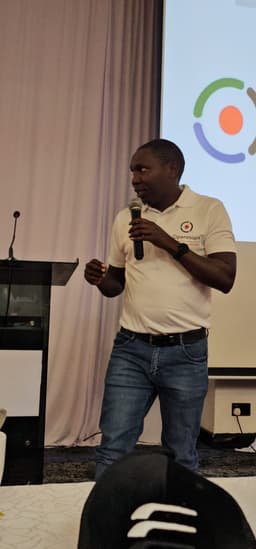Why LiDAR (Light Detection and Ranging) survey and mapping

Josh
Mon Apr 07 2025

LiDAR (Light Detection and Ranging) survey and mapping is a technology that uses laser light to measure distances to the objects. These measurements are used to create highly accurate three-dimensional (3D) representations, or maps, of the surveyed area.
Here's a breakdown of how LiDAR survey and mapping works and its significance, particularly in the context of development:
How LiDAR Works:
Laser Emission: A LiDAR system emits rapid pulses of laser light towards the ground or other targets. The light source is typically in the near-infrared or green spectrum.
Reflection and Return: When these light pulses encounter objects (ground, vegetation, buildings, etc.), they are reflected back towards the LiDAR sensor.
Distance Measurement: The sensor measures the time it takes for each laser pulse to travel to the object and return. Knowing the speed of light, the system precisely calculates the distance to the point of reflection.
Positioning and Orientation: The LiDAR system is integrated with a Global Navigation Satellite System (GNSS) receiver (like GPS) and an Inertial Measurement Unit (IMU). The GNSS provides the precise geographic location of the sensor, while the IMU tracks its orientation (roll, pitch, yaw).
Point Cloud Generation: By combining the distance measurements with the positional and orientational data, the LiDAR system generates a massive dataset of 3D points, known as a point cloud. Each point in the cloud has precise X, Y, and Z coordinates.
Mapping and Analysis: This point cloud is then processed and analyzed using specialized software to create various outputs, including:
- Digital Elevation Models (DEMs): Bare-earth representations of the terrain's elevation.
- Digital Surface Models (DSMs): Include the elevation of all features on the surface, such as buildings and vegetation.
- Contour Maps: Lines connecting points of equal elevation.
- 3D Models: Detailed three-dimensional representations of the environment and its features.
- Orthophotos: Geometrically corrected aerial images.
- Feature Extraction: Identification and mapping of specific features like buildings, roads, and vegetation.
Types of LiDAR Systems:
- Airborne LiDAR: Sensors mounted on aircraft (planes, helicopters, drones) to survey large areas quickly.
- Topographic LiDAR: Uses near-infrared lasers for land mapping.
- Bathymetric LiDAR: Uses green lasers that can penetrate water to map underwater terrain (riverbeds, coastlines).
- Terrestrial LiDAR (TLS): Stationary or mobile scanners used on the ground for detailed surveys of smaller areas or specific structures.
- Mobile LiDAR: Systems mounted on vehicles (cars, trains) to collect data along corridors like roads and railways.
Advantages of LiDAR Survey and Mapping for Development:
- High Accuracy and Precision: LiDAR provides centimeter-level accuracy in elevation measurements, crucial for detailed planning and engineering.
- Speed and Efficiency: It can collect vast amounts of data quickly, especially airborne LiDAR for large areas, significantly reducing survey time compared to traditional methods.
- Comprehensive Data: LiDAR captures detailed 3D information about both the terrain and the features on it.
- Vegetation Penetration: Some LiDAR systems can penetrate vegetation to capture the ground surface, which is invaluable for terrain modeling in forested areas.
- Remote and Safe Data Collection: LiDAR can be used in areas that are difficult or dangerous to access on foot.
- Day and Night Operation: Unlike photogrammetry which relies on sunlight, LiDAR can operate effectively both during the day and night.
- Versatile Applications: The data can be used for a wide range of development-related tasks.
Applications of LiDAR Survey and Mapping in Development in Kenya:
- Topographic Mapping: Creating accurate base maps for planning and design of residential, commercial, and infrastructure projects. Understanding the terrain in areas like Kenya with varying topography is crucial.
- Site Suitability Analysis: Determining the best locations for construction based on slope, elevation, and other terrain characteristics.
- Earthwork Calculations: Accurately calculating cut and fill volumes for land grading and construction, minimizing costs and environmental impact.
- Drainage Planning: Designing effective stormwater management systems based on detailed elevation data to prevent flooding.
- Infrastructure Design: Planning the optimal routes and gradients for roads, pipelines, and other utilities.
- Vegetation Analysis: Assessing vegetation height and density for environmental impact assessments, land management, and identifying potential obstacles. This could be relevant for agricultural land or forested areas in and around Kenya.
- Floodplain Mapping: Creating accurate flood inundation models for risk assessment and urban planning in flood-prone areas.
- Landslide Hazard Assessment: Identifying areas prone to landslides based on slope and terrain characteristics.
- Construction Monitoring: Tracking progress and ensuring accuracy during construction projects by comparing as-built conditions with design plans.
- Asset Management: Creating detailed 3D models of existing infrastructure (buildings, roads, power lines) for maintenance and management purposes.
What to Consider for LiDAR Survey:
- Cost: LiDAR surveys can be more expensive than traditional methods, especially for large areas or specialized applications. However, the speed and detail often lead to long-term cost savings by reducing design errors and construction issues.
- Data Processing: Processing the large amounts of data generated by LiDAR requires specialized software and expertise.
- Vegetation Density: While some LiDAR can penetrate vegetation, very dense canopies can still limit the accuracy of ground measurements.
- Weather Conditions: Heavy rain or fog can affect the accuracy of airborne LiDAR data.
In the context of development in Kenya, utilizing LiDAR survey and mapping can provide significant advantages for accurate planning, efficient design, and cost-effective construction, especially given the area's growth and the need for well-planned infrastructure and land use. It can provide a much more detailed and accurate understanding of the terrain and existing features compared to traditional surveying methods or lower-resolution satellite imagery.
If you are considering a significant development project in Kenya, exploring the option of a LiDAR survey could be a worthwhile investment.


